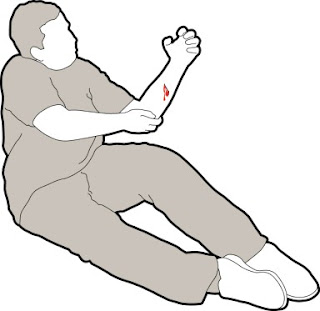91. Louse (Piojo): [plural Lice] are an order of over 3,000 species of wingless insects; three of which are classified as human disease agents. They are obligate ectoparasites of every avian and most mammalian orders. They are not found on Monotremes (the platypus and the echidnas or spiny anteaters) and a few eutherian orders, namely the bats (Chiroptera), whales, dolphins and porpoises (Cetacea) and pangolins (Pholidota).
92. Macrodrip (Macrogoteo): technique for administering intravenous treatments.
93. Narcotics (Narcóticos): are drugs such as opium or heroin which make you sleepy and stop you feeling pain.
94. Neuron (Neurona): is a cell which is part of the nervous system. Neurons send messages to and from the brain.
95. Ointment (Pomada): is a smooth thick substance that is put on sore skin or a wound to help it heal.
96. Oncologist (Oncólogo): is the branch of medicine that studies tumors (cancer) and seeks to understand their development, diagnosis, treatment, and prevention.
97. Optic Nerve (Nervio Óptico): also called cranial nerve II, is the nerve that transmits visual information from the retina to the brain.
98. P WVE (Onda P): atrial depolarization.
99. Pain (Dolor): is the feeling of great discomfort you have, for example when you have been hurt or when you are ill.
100. Ulcer (Úlcera): is a sore area on the outside or inside of your body which is very painful and may bleed or produce an unpleasant poisonous substance.
92. Macrodrip (Macrogoteo): technique for administering intravenous treatments.
93. Narcotics (Narcóticos): are drugs such as opium or heroin which make you sleepy and stop you feeling pain.
94. Neuron (Neurona): is a cell which is part of the nervous system. Neurons send messages to and from the brain.
95. Ointment (Pomada): is a smooth thick substance that is put on sore skin or a wound to help it heal.
96. Oncologist (Oncólogo): is the branch of medicine that studies tumors (cancer) and seeks to understand their development, diagnosis, treatment, and prevention.
97. Optic Nerve (Nervio Óptico): also called cranial nerve II, is the nerve that transmits visual information from the retina to the brain.
98. P WVE (Onda P): atrial depolarization.
99. Pain (Dolor): is the feeling of great discomfort you have, for example when you have been hurt or when you are ill.
100. Ulcer (Úlcera): is a sore area on the outside or inside of your body which is very painful and may bleed or produce an unpleasant poisonous substance.




















































